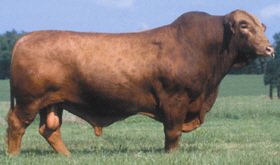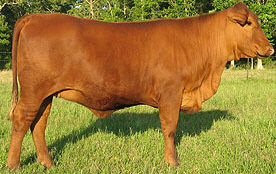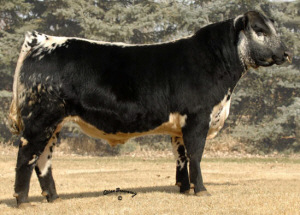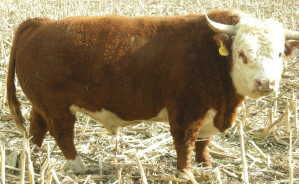



Brangus
History
The Brangus breed was developed to utilise the superior traits of Angus and Brahman cattle. Their genetics are stabilised at 3/8 Brahman and 5/8 Angus.
The combination results in a breed which unites the traits of two highly successful parent breeds. The Brahman, through rigorous natural selection, developed disease resistance, overall hardiness and outstanding maternal instincts. Angus are known for their superior carcass qualities. They are also extremely functional females which excel in both fertility and milking ability.
A review of the development of the Brangus breed would take us back beyond the founding of the American Brangus Breeders Association in 1949; however, registered Brangus descend from the foundation animals recorded that year or registered Brahman and Angus cattle enrolled
since then. Much of the early work in crossing Brahman and Angus cattle was done at the USDA Experiment Station in Jeanerette, Louisiana. According to the USDA 1935 Yearbook in Agriculture the research with these crossed started about 1932.
 |
 |
Comparative
In recent carcass tests conducted by Texas A & M University confirmed the ability of Brangus to produce exceptionally high quality carcasses. Three hundred thirty (330) steers by seventeen Brangus sires, and thirty two Angus steers by 2 high marbling accuracy Angus carcass sired were used in this test. The nineteen sires were randomly bred to predominantly Brangus females. The cattle were managed alike, fed at Tri-State Feeders and harvested at Iowa Beef processors, Amarillo, Texas.
The Warner-Bratzler Shear Force Test was conducted on ribeye samples from each of the steers. Ninety-seven percent (97%) of the Brangus samples scored "tender" or better, while 94% of the Angus samples tested tender. Fourteen of the seventeen Brangus were more favorable that the Angus average. According to the 1990 National Beef Tenderness Survey, the average for shear force rating was 7.4 lbs.
Distribution
The Brangus can be found all over the USA, Canada, Mexico, Australia, Argentina and South Rhodesia in Africa.
References (the above information was cited from the following sites)


